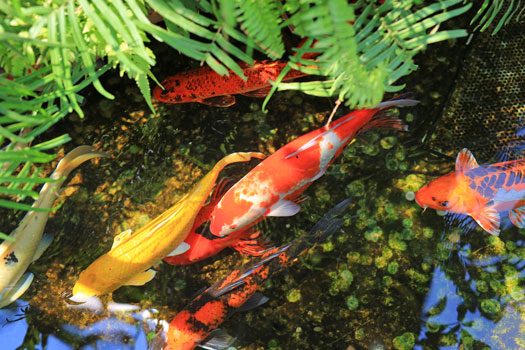- Your shopping cart is empty!
Is It a Good Idea to Put Gravel at the Bottom of a Pond?

Recreating natural habitats as much as possible is a goal all koi pond keepers should strive for. A fiberglass pond form or liner materials that hold water certainly don’t fit the description of a natural bottom, which is why many koi keepers choose gravel and rocks as a substrate. Aquarists who keep freshwater tanks don’t think twice about the use of gravel at the bottom. In the case of saltwater reef tanks, substrates tend to combine sand, shells, and rocks that would normally be found in coastal habitats. The knowledgeable staff at Aquatic Warehouse, a trusted provider of koi pond supplies, wants to share some considerations about putting gravel at the bottom of a pond.
Gravel Bottoms Provide a More Natural Look
Smaller garden ponds aren’t very deep. As long as the water isn’t overrun by algae bloom and debris, you can easily see right through the surface all the way to the bottom, and this is why gravel is recommended. You should think of the bottom as one of the visible features of your pond. To this effect, you should also choose aesthetic gravel along with larger rocks. Small river stone and pebbles are typically smooth and come in different colors for a more attractive appearance.
Limestone Gravel and pH Levels
Some of the most expensive river stone available to aquarists and pond keepers is actually the sedimentary rock known as limestone. There’s a chemical advantage to incorporating limestone: its calcium carbonate content can regulate the pH of the pond water through a natural process, which works great in an area with slightly acidic water quality, but not so much in places like Southern California or Arizona where the water quality is alkaline. The porosity of limestone is also beneficial to colonization by beneficial bacteria. The only problem with limestone is that it eventually dissolves, but it will take several years.
Gravel as a Filtration System
Virtually all rocks activate their sedimentary properties when they’re underwater, thus creating a natural filtration system because they’re able to trap debris as it falls in between fragments. As can be expected, the debris will still be there at the bottom, but it can be cleaned up by means of vacuuming or through the feeding habits of scavengers such as sturgeon and crayfish.
Gravel Will Anchor the Liner
Whether you have pea-sized gravel, large pebbles, or big rocks, enough of them will keep the liner down even if the ground underneath accumulates moisture. A liner that starts floating around the pond is a headache you don’t want to deal with.
The Right Choice of Gravel
The fancier the gravel, the more you’ll pay for it. This is true for tank aquarists and koi pond keepers. Colorful rocks that have been extracted from rivers and put through a tumbler will cost more, but there’s no question that they look great. Whenever possible, look for smooth one-inch pebbles mixed with smooth, larger rocks. If you have a liner, avoid gravel fragments with sharp edges. A variety of pebble sizes will make the bottom a more playful habitat for your fish to rest and hide.
Whether you decide on putting gravel in your pond or not, you’ll need several supplies to properly care for the pond so you can keep your fish healthy and happy for many years to come. From pond vacuums and pumps to lighting and nutritious koi food, Aquatic Warehouse has everything you need. Stop by our store in Kearny Mesa, take a look at what we have to offer on our website, or give us a call at 858-467-9297 if you have any questions.
